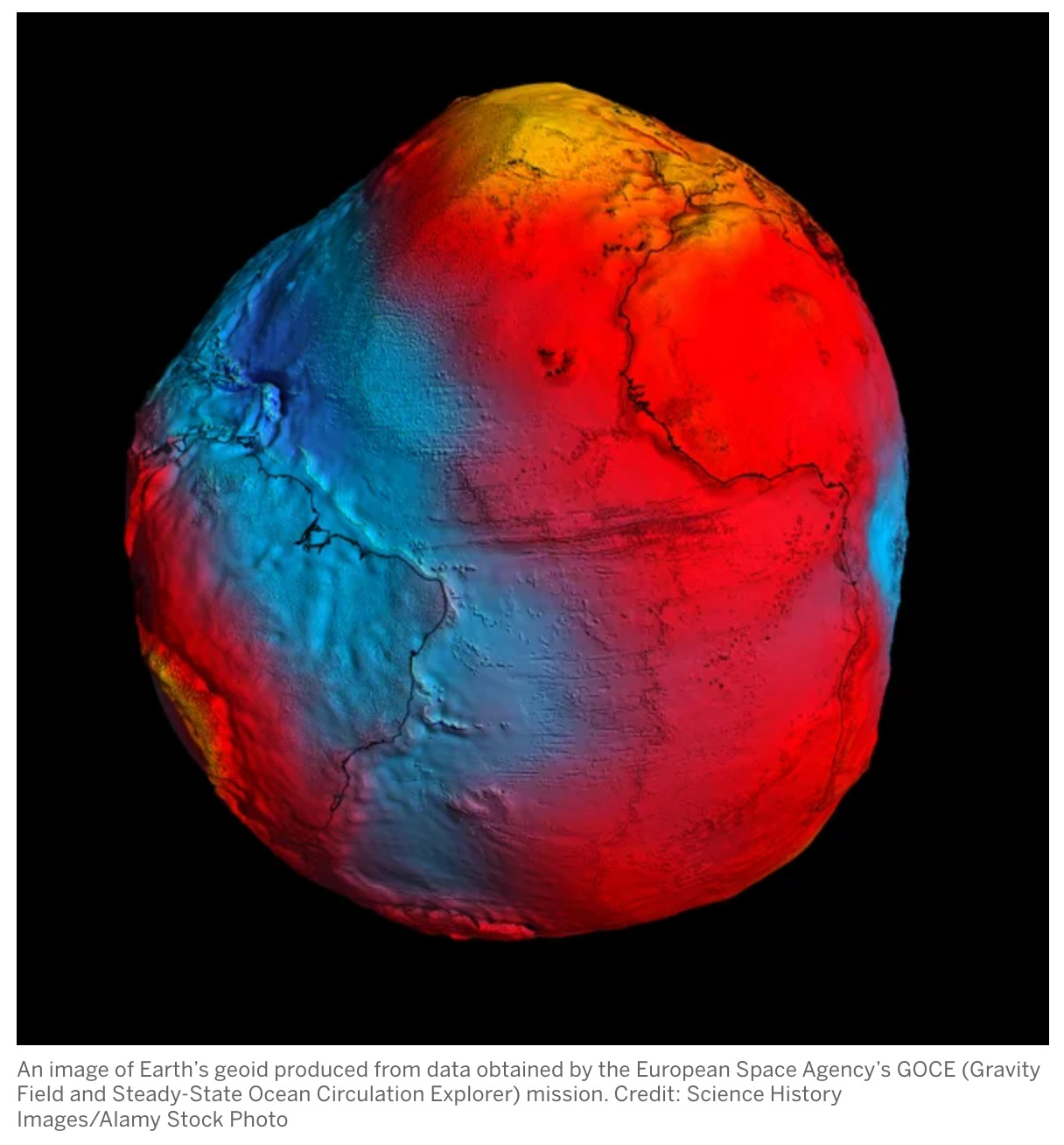This week we examine a new method of delivering multiple doses of a drug all at once and have the drug dispensed within the body over time. We discover a gravitational hole on earth where the ocean height is 350 feet below the ocean height on the rest of the planet. Finally we investigate a new Gravitational Wave discovery. Is this evidence of super black holes or something from much earlier in the creation of the Universe?
Single Shot Drug Doses
On average patients with chronic diseases follow their prescribed treatments about 50% of the time. For many treatments, prescriptions need to be taken in the right doses, at the right time and regularly for the drugs to work. There are a range of reasons why people miss taking medications.
A team at Rice University in the US may have developed a solution. Their system starts with an injection containing hundreds of tiny micro plastic particles, each containing a small does of a needed drug. The capsules are made of the polymer PLGA which our bodies can break down safely. By adjusting the molecular weight of the polymer used in each capsule we can control the time taken for the capsule to break down and release the drug inside. In the research study the team showed capsules that broke down at 10, 15, 17 and 36 days after injection.
With most drugs they operate like sledgehammers. We inject a large amount, the levels of the drug spikes and reduces over time. An extended release pill or injection can prolong the drug’s effect and taper off from a peak if desired. This is important for drugs like insulin which has a narrow therapeutic window between being helpful and dangerous.
The team uses robots to fill the capsules and they are in the process of automating the entire process. This will bring down costs and ensure consistency of the break down of the capsules. The goal is to develop a library of capsules with different breakdown intervals. This will allow a range of medicines with different dosing requirements to be administered. Work is also underway to shorten and extend the release times. Currently the shortest release time is 12 hours and the longest 36 days. Additionally the team is working to make the capsules compatible with a wider range of drugs.
Gravity Hole at the Bottom of the Ocean
In the Indian Ocean there is a three million square kilometer patch of water where the sea level is 350 feet lower than the global average. It was discovered in 1948 and is called the Indian Ocean geoid low (IOGL).
A new study may have found the reason for this strange occurrence. The Earth is not a perfect sphere. It is squashed at the poles and bulges at the equator. Different regions also exert a different gravitational pull depending upon the mass of the Earth’s crust, mantle and core. Ground and satellite measurements can be combined to show what the ocean’s surface would be like after removing the affect of winds and tides. This visualization is called the Global Geoid.
The dip in the Indian Ocean is the most pronounced gravitational anomaly. It is centered about 1,200 km southwest of the southern tip of India. A team from the Indian Institute of Science in Bangalore has studied a dozen computer models of how the earth formed over the past 140 million years. Their conclusion is that the dip is caused by a distinctive mantle structure combined with an adjacent disturbance under Africa. This disturbance is know as the “African Blob”. It is a hot low density material.
Geologists believe that Tethyan slabs deep in the mantle cause the IOGL. These slabs are likely the remains of the seafloor of the Tethys Ocean which was situated between Laurasia and Gondwana more than 200 million years ago. Way before the tectonic plates moved to create the land masses that we know today. Africa and India (and Australia) were part of Gondwana. The geoid low was probably formed about 20 million years ago as mantle material flowed from the African blob towards the IOGL. When the temperature differences causing this flow subside the IOGL will like more from its’ current position and dissipate. This will likely take several million years.
Gravitational Waves
We have spoken about Gravitational Waves before (here and here). In short they stretch and compress space as they ripple through the cosmos. In 2015 the LIGO observatory was built and first detected a Gravitational Wave.
However LIGO was not our only attempt to detect Gravitational Waves. For the past 15 years a global group of researchers has been collecting data from pulsars in the Milky Way to try and identify changes in space that might be caused by Gravitational Waves.
Teams observed the output from Pulsars (the ultra dense remnants of massive stars that have gone supernova). Pulsars are like lighthouses in space. As they spin their magnetic poles emit radio waves that travel at the speed of light throughout space. The spin means that some of the wave will be observable from earth.
The pulses arrive on earth like a perfectly timed metronome. The timing was first observed in 1967 and the perfect timing was initially thought to be an alien civilization trying to communicate. Albert Einstein predicted that gravitational waves would stretch and compress space. This stretching and compression will change how far the radio waves have to travel to reach earth. That difference in distance can be measured and show us how the gravitational wave is disrupting space.
For the past 15 years US and Canadian observatories carefully timed the radio pulses from 67 pulsars. In 2020, after analysis of 12 years of data the first hints of a strange hum in the universe became apparent. 3 years later we now have concrete evidence of the existence of a gravitational wave background in the universe.
The waves that were observed are by far the most powerful ever measured. Each wave carries roughly a million times more energy than the one off bursts of gravitational energy measured by LIGO. The LIGO measured waves were of a high frequency whereas the waves just measured were of ultra low frequency. A single rise and fall of one ultra low frequency wave takes years to a decade to pass through the earth. Gravitational Waves travel at the speed of light making the wavelength of a single wave ten (or possibly more) light years long. We can not detect such a wave on earth. We have to use the whole galaxy.
There are a couple of theories of the origin of the waves. One thought is that two supermassive black holes that are in the final stages of smashing together are causing the background waves. Other theoretical proposals are that the waves originate from the Big Bang or rather the Big Bounce. The theory being that the universe did not start with a bang, rather a precursor universe collapsed upon itself before expanding back outwards sending waves into space. String theory (a theory that all matter is made up of tiny vibrating strings) predicts that one dimensional defects called cosmic strings may have formed in the early universe. Those defects could dissipate energy via gravitational waves. It will likely be some time before we truly understand what is causing these waves.
Teams from around the globe (Europe, India, China and Australia) all released papers this week reporting the same gravitational wave background signals in their data. The International Pulsar Timing Array consortium is combining all that data in an attempt to better characterize the signals and identify the source.
The Tallest Mountain in the Solar System
This is a photo of Mount Olympus on Mars. At 21,229 meters high it is significantly taller than Mt Everest (8,848m). There are taller structures on some objects in the Asteroid Belt however Olympus is the tallest on a planet.
Whilst we are admiring planets here is a new James Webb Space Telescope photo of Saturn. The two bodies to the left of the photo are Saturn’s moons, Dione and Tethys (humans tend to reuse names a lot).
Paying it Forward
If you have a start-up or know of a start-up that has a product ready for market please let me know. I would be happy to have a look and feature the startup in this newsletter. Also if any startups need introductions please get in touch and I will help where I can.
If you have any questions or comments please comment below.
I would also appreciate it if you could forward this newsletter to anyone that you think might be interested.
Till next week.







